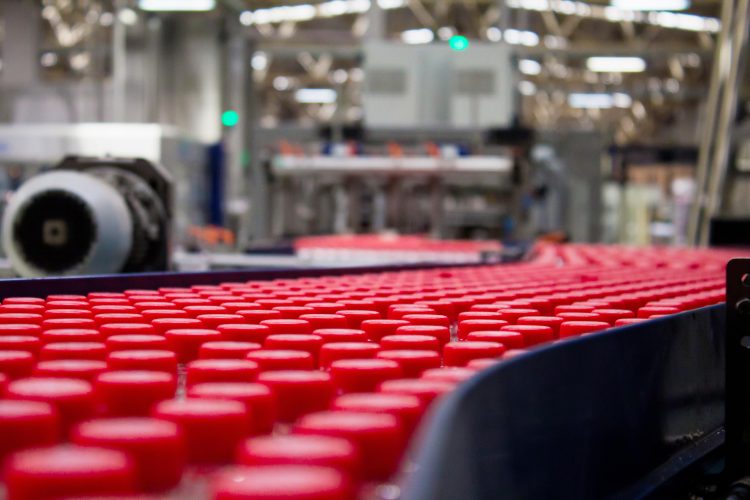Energy and food production: Can we have our cake and eat it?
- Like
- Digg
- Del
- Tumblr
- VKontakte
- Buffer
- Love This
- Odnoklassniki
- Meneame
- Blogger
- Amazon
- Yahoo Mail
- Gmail
- AOL
- Newsvine
- HackerNews
- Evernote
- MySpace
- Mail.ru
- Viadeo
- Line
- Comments
- Yummly
- SMS
- Viber
- Telegram
- Subscribe
- Skype
- Facebook Messenger
- Kakao
- LiveJournal
- Yammer
- Edgar
- Fintel
- Mix
- Instapaper
- Copy Link
Posted: 20 September 2022 | Jodie Eaton | No comments yet
Shell Energy UK examines how the UK food and beverage industry can transform its energy use to mitigate the impact of energy price rises and support a transition to renewables.


The cheapest unit of energy is the one you don’t use. It’s an old adage, but it’s never been truer for big energy users, such as food manufacturers looking to reduce bills. Jodie Eaton, CEO of Shell Energy UK, considers how UK food and drink can harness opportunities to streamline spend overnight.
The UK food and drink industry forms a large part of our country’s economy, with an annual turnover in excess of £90 billion. And while it’s a hugely varied sector, including baking, brewing, ready meals and dairy, one thing that unites them is the huge impact of energy price rises in recent months.
Recent figures from the CGA Prestige Foodservice Price Index show that year-on-year inflation within the foodservice sector hit a new record at 13.6 percent. Similarly, reports from the Food and Drink Federation (FDF) confirm that upstream food inflation had risen by 5.9 percent, with the likes of lamb/goat’s meat increasing by 16.9 percent, low fat milk by 14.2 percent, and margarine and vegetable fats by a staggering 34.8 percent over the last year.
All of these inflationary price increases (including to energy) are, in part, driven by trade tariff changes for the UK and global events, such as the crisis in Ukraine. Looking at statistics on the UK Government website, shows that medium sized business users of electricity saw Q1 year-on-year bills rise by nearly 50 percent. Users of gas saw even greater rises of close to 140 percent when comparing Q1 2021 to Q1 2022.
While the UK’s food industry is facing unprecedented rises in energy and raw material prices, it is also faced with the ongoing challenge to decarbonise its operations. The FDF produced key documents1 ahead of COP26 in November 2021 that set out the actions needed across the food chain to decarbonise. For manufacturers, actions are focused on four key areas:
- Improve energy efficiency
- Decarbonise electricity
- Decarbonise process heat
- Shift to sustainable refrigerants.
Within months, the need to address change became even more urgent with the war in Ukraine putting pressure on both prices and energy supplies.
April 2022 saw the UK Government unveil its much-anticipated Energy Security Strategy. This comprehensive document outlines its approach to securing national energy supply, alongside plans to embrace decarbonisation in the long-term and manage shorter-term volatility across global markets.
But the new UK energy security strategy is not a simple fix. Indeed, it increases the onus on major energy users to continue to develop their own roadmaps to address market volatility and build energy resilience into their own operations.
This latest strategy comes in the wake of the Industrial Decarbonisation and Energy Efficiency Roadmap, published in October 2017, which sets out six key actions to shift the UK food and drink sector towards its 2050 goals.
Action is needed
There are huge opportunities for food and drink businesses to transform their energy use – harnessing power from waste, nuclear, solar, renewables and even hydrogen, but these are all long-term strategies that will take years to implement.
In the meantime, what’s needed is a mandated focus on corporate energy efficiency that goes beyond procurement and instead involves all aspects of operations. Done well and with tight ongoing management, it can mitigate the impact of energy price rises and support decarbonisation goals, while establishing a foundation for a transition to renewables.


Rising food inflation has forced many people to rely on food banks and food aid services
In an industrial food and drink setting, energy is obviously used for core production, but also for building services, computing, transport and administrative purposes. The food industry is already squeezing margins to contain costs in the face of rising inflation.2
At Shell Energy, we believe that even now, most businesses have the potential to take a further 10-40 percent off their energy demand. Certainly, those that have already looked at energy management and implemented some measures will benefit from bringing in expertise to examine in detail what else can be done. It requires a comprehensive review of every aspect of energy consumption, as well as rigorous attention to around-the-clock monitoring. If you get it right, businesses can not only alleviate the pressures of energy price volatility, but they can also unlock the capital needed to invest in more energy efficient equipment and processes for the long-term.
At Shell Energy, we’re proud to work in partnership with some of the UK’s leading food and drink producers, helping to develop an energy strategy that sets a path towards the company’s decarbonisation ambitions. Making such a transition is challenging, given the complexity of the UK energy market. That’s why trust and a shared culture of ‘doing the right thing’ is key. While we have set clear long-term objectives, we still have an eye on tangible cost savings that can be introduced today.
We have also started working with a major industrial conglomerate to provide a secure supply of 100 percent renewable energy. Concurrent with this, we are undertaking an energy audit to identify potential cost savings across its UK sites.
Quick energy wins
Many of the quick wins, in terms of greater energy efficiencies, are remarkably simple. Some operatives may keep smaller motors running (even when not in use) thinking that they don’t use much energy. But all such habits, taken together, will impact on energy costs. Real-time monitoring of energy use by department and site will enable anomalies to be quickly identified and dealt with. Creative thinking about when operations run to take advantage of lower cost energy is also a possibility. Can you run your processes at night and pack during the day? What difference will that make?
Another option is the installation of occupation sensors that will automatically switch off lights in empty rooms and adjust heating levels in accordance with building use. Every small change can add up to making a big difference. It can ultimately free up cash to invest in more efficient machinery and embrace smart energy solutions. An approach that is gaining ever-more traction among manufacturers.
There is no single solution when it comes to optimising energy efficiency and every business will benefit from bringing in expertise to identify the steps it can take in both the short and long-term to bring their energy use under tight control. There is still a huge role that mitigation and reduction can play in preserving our manufacturing competitiveness.
About the author
Jodie Eaton, CEO of Shell Energy UK Ltd, has more than 30 years’ experience leading commercial, trading and retail energy businesses. Prior to joining Shell in September 2020, she held a board member role at npower, led its Business Solutions division, and has also worked for E.ON UK and TXU Energy.
Related topics
Related organisations
CGA Prestige Foodservice, Food and Drink Federation (FDF), Shell Energy UK, UK Government









